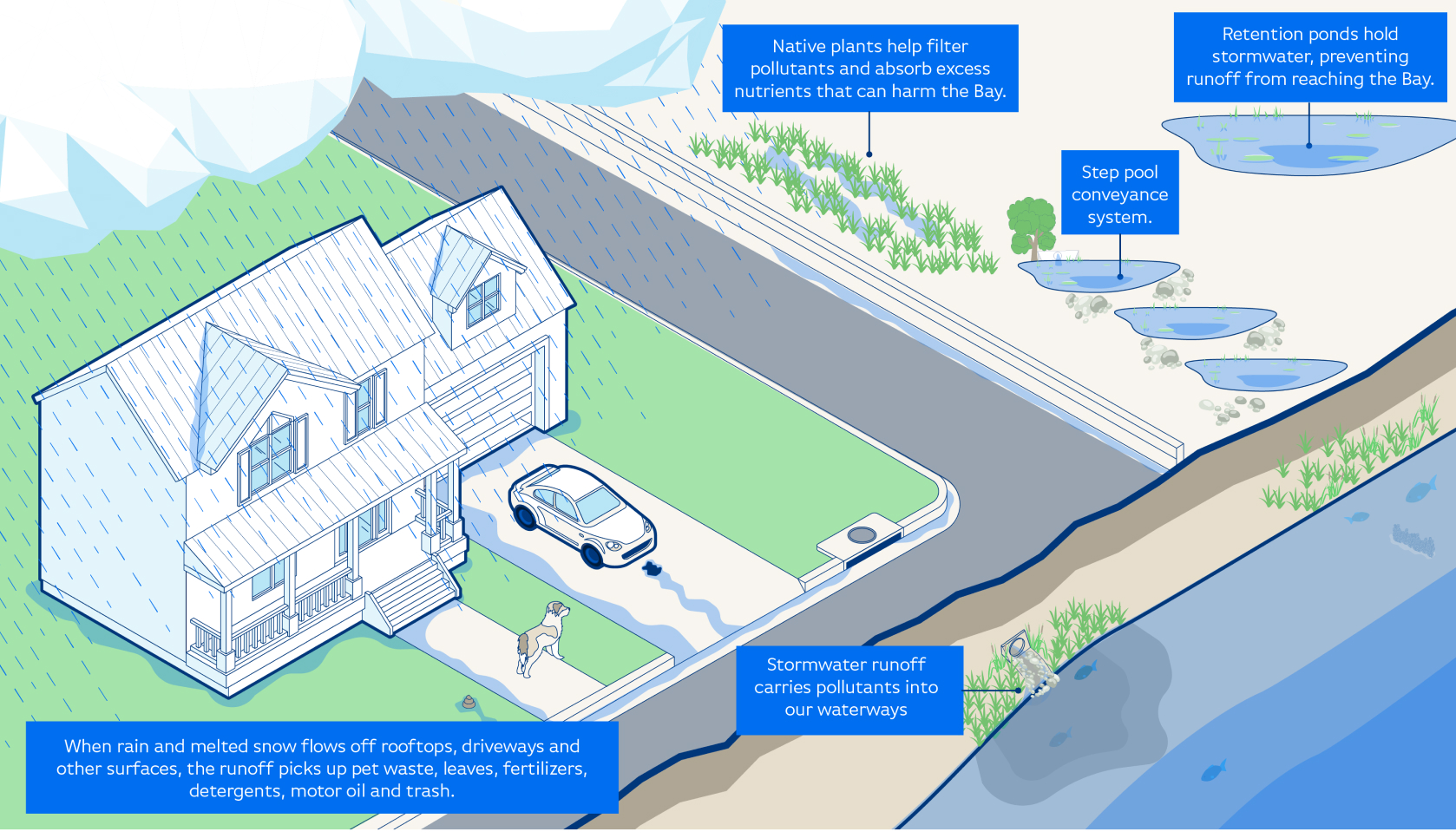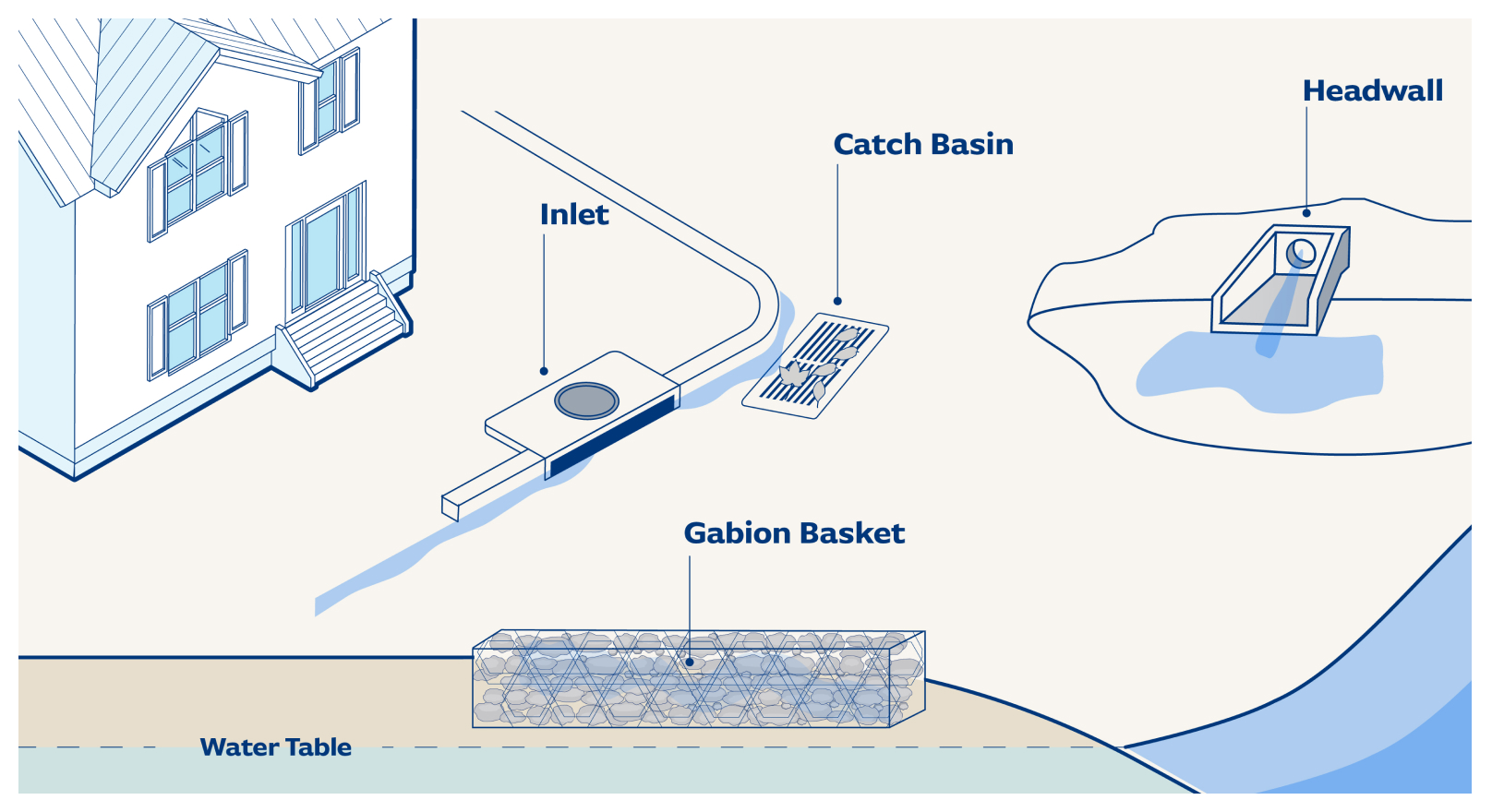Stormwater Improvements
Why?
When rain or snowmelt flows through developed areas – covered in paved streets, parking lots and building rooftops – it doesn't filter into the soil like it would in a natural landscape. As we channel the water out of our cities and neighborhoods and into rivers, streams, creeks, and coastal waters, it takes the pollution it picks up with it.
Slowing the flow of stormwater and finding ways to let it filter into the ground is an effective strategy for protecting aquatic life and improving the health of our local waterways.
How?
To reduce the stormwater pollution that flows into local waterways, stormwater improvements are focused on the following areas:
Nature-based restoration
To reduce the stormwater pollution that flows into local waterways, stormwater improvements are focused on the following areas:
Infrastructure & Pollution Control
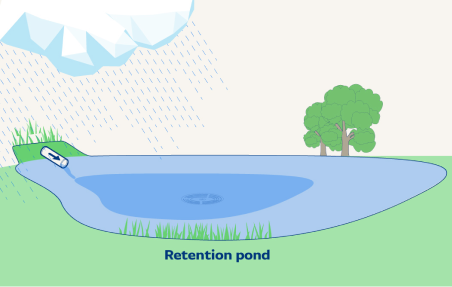
Rebuilding existing facilities such as failed dry ponds, detention ponds, or infiltration basins to optimize pollution reduction capacity.
Outfalls & Water Quality
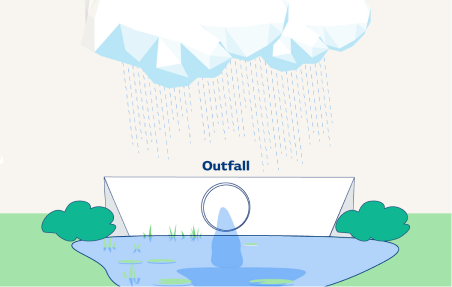
Reconstructing eroded or failing stormwater outfalls into systems that can move high flows as well as provide enhanced water quality and habitat enhancements.
Stream Erosion & Flood Control
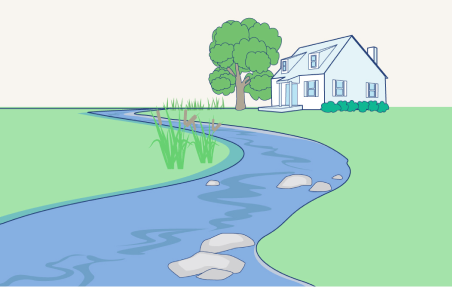
Restoring degraded streams to improve water quality and reduce flooding. Stream erosion is the largest contributor of sediment and phosphorous to our local rivers.
Stormwater Infrastructure Management
Constructing new drainage systems such as inlets, pipes, headwalls, and/or placement of outfall protection. Occasionally, the work may include replacing catch basins or gabion baskets.
See a photo example of Stormwater Infrastructure hereHomeowner incentives
The Bureau of Watershed Protection and Restoration offers two property tax incentives for residents who install stormwater improvements on their property:
Stormwater Management Property Tax Credit Program:
Residential and commercial property owners can receive a property tax credit by installing and maintaining qualified stormwater management improvements (e.g., living roofs, sidewalk infiltration planters, permeable pavers, etc.) The credit is 10% of the cost of materials and installation for making qualified improvements, and does not exceed $10,000 over the five-year life of the credit.
Learn MoreWatershed Protection & Restoration Fee Credit Program:
Eligible property owners can reduce their annual Watershed Protection and Restoration Fee (WPRF) by up to 50% for proactive and sustainable uses of stormwater runoff controls. To determine your annual WPRF, enter your address here.
Learn More

